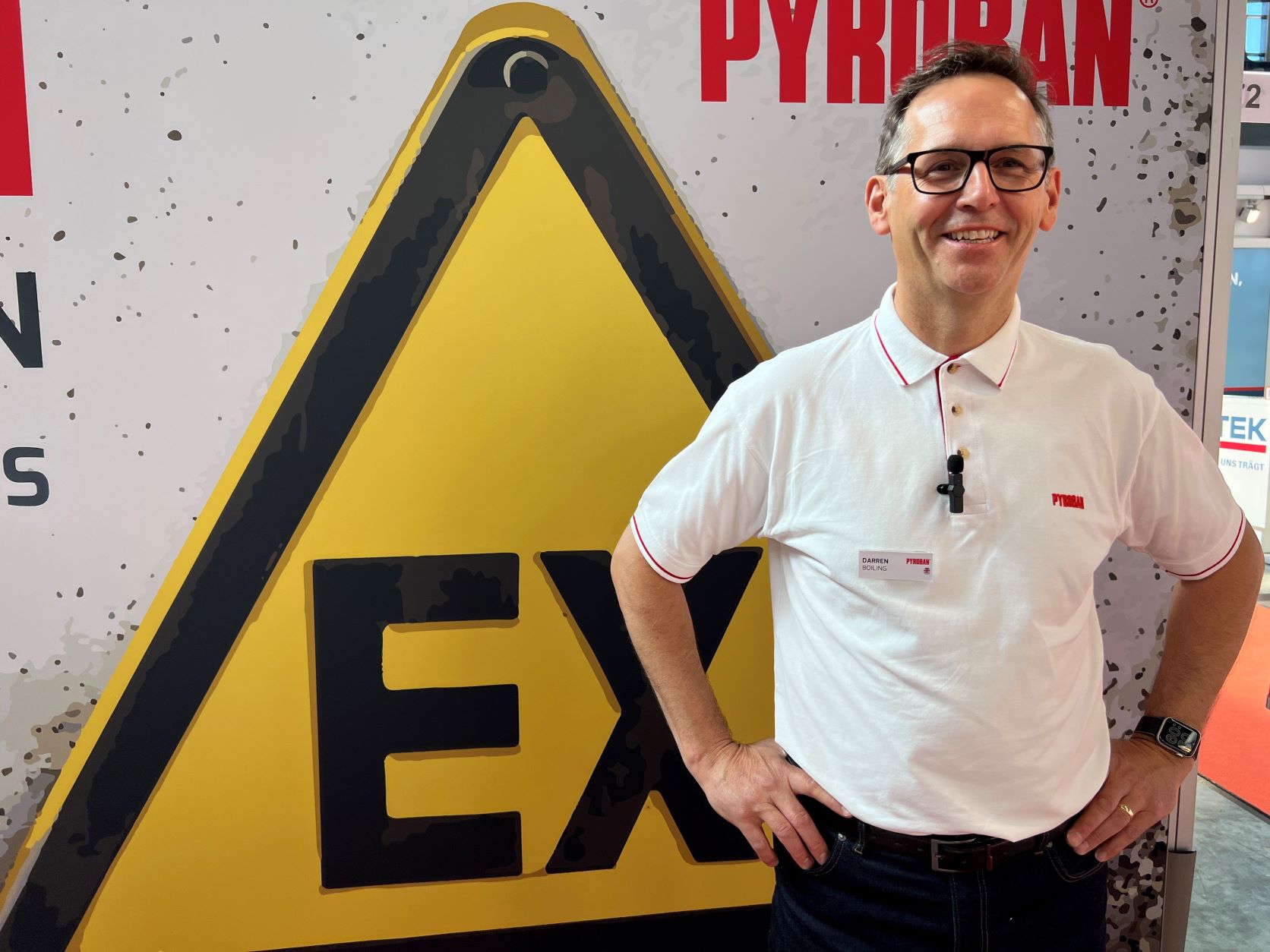Explosion protection safety company Pyroban is heading to intralogistics show IMHX 2022 in Birmingham, UK, with Ex Solutions for AGVs, AMRs, robots, and a wide range of other materials handling and plant equipment.
“Pyroban has exhibited at every single IMHX in the show’s history, presenting explosion protection solutions for lift trucks. In this time, the materials handling landscape has changed,” says Darren Boiling, Materials Handling Sales Manager for Pyroban. “Automation, sustainability, energy costs, and business purpose are now high on the agenda for decision makers. At IMHX, we’re addressing how these topics influence businesses operating with potentially explosive atmospheres.”
ATEX AGVs, AMRs and automated robots
Pyroban will address the myth that ATEX (with UKCA marking) AGVs (Automated Guided Vehicles), AMRs (Autonomous Mobile Robots), and robots don’t exist. It is possible to safely “Ex” convert some of the latest technologies that will be on show at IMHX (Stand 5E40) for hazardous area operations where automation is also required, or equipment such as carousels .
“Unlike the ATEX forklift conversions we are known for, complex machines like AGVs or AMRs can be optimised with a ground-up approach where we work closely with the OEM at product design and assembly level,” says Boiling.
Pyroban has experienced growing demand for AGVs and AMRs in some “zoned” hazardous area operations where flammable material is handled. Paint tins, aerosols, IBCs, or drums full of solvents can all be moved by AGVs, AMRs, or robots, subject to a thorough risk assessment.
It was this growing trend that led Pyroban’s Managing Director Steve Noakes, the Convenor of the Standards Committee responsible for EN1755 (the standard specifically written for industrial trucks operating in potentially explosive atmospheres), to lead the committee and produce an update which now includes requirements specifically for driverless trucks (i.e. AGVs or AMRs).
Power choices in hazardous areas
For traditional forklifts, there are also more power choices than ever before and businesses are increasingly looking to reduce energy costs and improve their environmental performance. Businesses with Zone 1, 2, 21 or 22 areas are no different, and many have already turned to electric materials handling equipment, including waste companies, chemical firms, food and drink businesses, and supermarkets storing flammable aerosols.
“At IMHX, we will be sharing the latest updates on power options including the facts about Stage V ATEX forklifts and the first ever solutions for LPG forklifts working in Zone 2 hazardous areas,” says Boiling. “In addition, we will be highlighting the facts about the ATEX certification requirements for lead acid batteries and talking about the ignition risks when using lithium-ion in hazardous areas.”
Gas detection rental to bridge ATEX forklift gap
Pyroban will also address what businesses can do to bridge safety gaps that may occur due to extended OEM forklift production lead times.
“Over the last few years, forklifts are not being delivered to Pyroban fast enough which has led to an inevitable knock-on effect to the availability of ATEX (with UKCA marking) compliant forklifts for our customers,” says Boiling. “We responded to safety concerns by offering Gascheka Zone 3 on a rental basis.”
Gascheka Zone 3 is a bolt-on gas detection system designed specifically for mobile equipment, and was previously only available to buy outright from Pyroban. Now, Pyroban is supporting the industry by offering the gas detection system for short periods. The units can be fitted to equipment of any age in just a few hours including warehouse equipment, forklifts, vans, cranes, access platforms, and people transporters.
“If hazardous area operations cannot source a new or used ATEX compliant forklift in time, and when ceasing the operation isn’t an option, under an ATEX 1999/92/EC or DSEAR (in the UK) risk assessment, they may consider that installing the Pyroban Gascheka Zone 3 system on existing standard trucks is an acceptable interim solution,” confirms Boiling.
Protecting people, their investment, and our environment
2022 marks 50 years of one clear purpose for Pyroban – keeping people safe in hazardous areas.
“Throughout our history, Pyroban’s technical integrity and support has been second to none in the conversion of lift trucks and power systems for use in hazardous areas,” says Boiling, who has been with the company for nearly 35 years. “Our customers rely on us to keep them safe in their daily operations and we have a great team which follows the principles of five solid foundations to deliver on our purpose.
“We design for safety and performance, build with premium quality, and deliver a low total cost of operation (TCO). Lifetime support and care programmes reinforce the customer experience alongside pro-active advice and consultancy from the very beginning,” says Darren explaining that there is still significant market education to do about ATEX and the risks of using MHE equipment in potentially explosive atmospheres for end users, OEMs and dealers.



